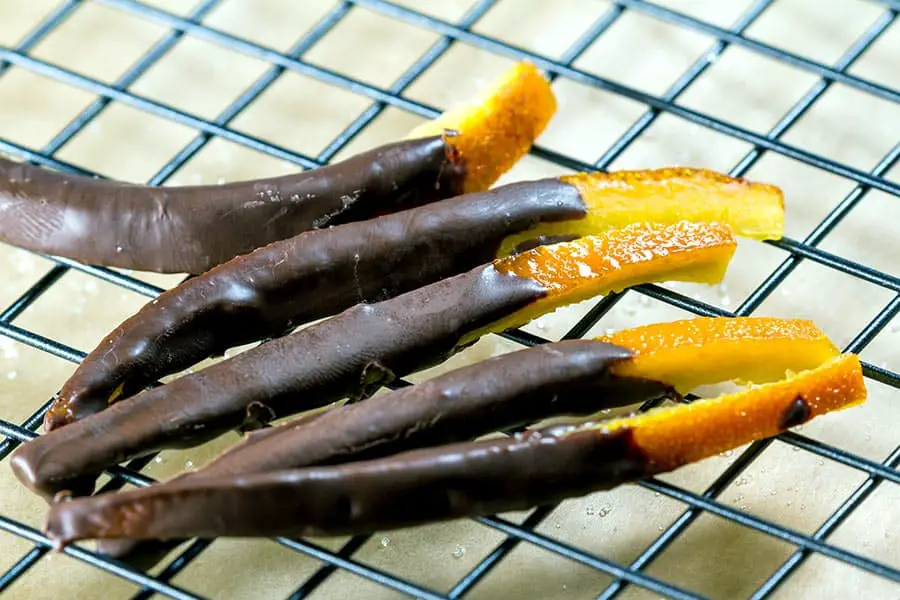
California is famous for having thousands of orange groves dotted across its landscape. This fruit is significant from an economic standpoint. Oranges are the 6th largest agricultural export providing nearly the entire nation with fresh oranges. While you may be familiar with the standard variety of oranges found on grocery store shelves, many interesting varieties are grown in the state. Two that are often confused are Cara Cara oranges and blood oranges, but are they the same?
Cara Cara oranges are not the same as blood oranges; both varieties of oranges come with their own unique characteristics. Blood oranges are a deep red, have a tangy or tart flavor, and contain seeds. Cara Cara oranges have a pink hue, are sweeter, and have no seeds.
Before you hit the grocery store in search of a new citrus to try, take a moment to learn about the differences between Cara Cara oranges and blood oranges. Please continue reading to learn more about the history of Cara Cara oranges, where they are grown, and why people prefer them to other varieties.
Cara Cara Oranges and Blood Oranges – Are They the Same?
There are over 600 varieties of oranges across the globe. While most varieties are basically similar, a handful stands out for their unique, non-orange coloring, such as blood oranges and Cara Cara oranges.
Despite the deviation in color, Cara Cara oranges and blood oranges are not closely related. The first Cara Cara orange was discovered in Venezuela in the 1970s. It was the result of a variation from a standard Washington navel tree. Blood oranges, on the other hand, are much older. They originated in Asia but quickly spread and became prominent around the Mediterranean during the 1700s because of the ideal climate there.
When it comes to color, blood oranges are known for their deep red flesh. Cara Cara oranges are not as bold with an interior that is pinker like a grapefruit. From a flavor perspective, blood oranges are often more tart or sour, while Cara Cara oranges are very sweet and have low acidity.

The season for blood and Cara Cara oranges is about the same. Blood oranges in California are harvested from November to May, with Cara Cara oranges available from December to May.
Where are Cara Cara Oranges Grown in California?
The most common type of orange grown in California is the Washington navel orange. Since Cara Caras are a variation of this variety, and they are closely related, the industry doesn’t usually separate their production counts when reporting industry data. However, it’s estimated that approximately 10 percent of all navel oranges produced in California are Cara Cara oranges.
While oranges can be grown throughout most parts of the state, about half of all oranges grown in California come from Tulare County (roughly between Bakersfield and Fresno). The orange crop from Tulare County alone equates to about $716 million.
Are Cara Cara Trees Easy to Grow?
The California climate is perfect for many crops like almonds, grapes, pistachios, and citrus, including the Cara Cara orange.
Cara Cara trees are extremely easy to grow as long as they are placed in a suitable location and environment. Cara Cara oranges must be grown within Zones 8 to 11 on the USDA’s Plant Hardiness Zone Map. This area includes nearly all of California, some parts of Texas, Florida, and the Deep South. Outside of these areas, there are only small pockets of suitable environments in the United States.
Cara Cara trees need to be placed in full sunlight to produce the most fruit. While they don’t need any special soil conditions, the area must drain well as saturated soil can damage Cara Cara trees. You should avoid watering your Cara Cara tree daily as this can result in over-watering. Instead, water your tree only twice a week.
Bay Area Answers Fun Fact: Spanish missionaries planted the first orange tree in California in 1769 in San Diego.
A Cara Cara orange tree can reach 20 feet tall when fully mature. The good news is that you won’t have to wait too long to enjoy its delicious fruits. Cara Cara trees can produce fruit as early as their first year of life.
If you don’t have a large property or a lot of space, it is possible to grow a Cara Cara orange tree in a container. Professional growers recommend a minimum of a 20-gallon container. Wooden containers work well because they keep the soil adequately drained.
Other Posts of Interest
- Is It Illegal To Collect Rainwater In California?
- Is Rice-a-Roni Made In San Francisco?
- Does California Have Gambling Casinos?
- What Is The Largest Bay In California?
Why are Cara Cara Oranges so Delicious?
Many orange aficionados will agree that Cara Cara oranges are one of the most delicious varieties of oranges. Unfortunately, many types of oranges are overly acidic, tart, or sour, this isn’t the case for Cara Cara oranges. Their sweet flavor is much gentler on the palate. Plus, their low acidity makes them perfect for people who are sensitive to acidic food, like those with acid reflux.
In addition to their great taste, Cara Cara oranges come with some health benefits. This variety contains about 20 percent more vitamin C and thirty percent more vitamin A than standard navel oranges.

Cara Cara oranges have many uses beyond being eaten fresh. Their low acidity makes a deliciously sweet orange juice. You can also use them just like any other orange to make salsa, orange marmalade, add them to a salad, enjoy a breakfast smoothie, make delicious orange rolls and bread, or candy the orange peels (dipped in dark chocolate, of course).
What is the Difference Between a Navel Orange and a Cara Cara Orange?
Technically speaking, Cara Cara oranges are navel oranges. Their existence stems from the variation on a single Washington navel orange tree in Venezuela in 1976. A Cara Cara orange and a navel orange are practically identical on the outside. Their fruit is the same size and color. However, the similarities end beyond the peel.
Once open, you’ll see that a navel orange has the traditional orange color. On the other hand, Cara Cara oranges are deep pink, similar to a grapefruit. Cara Cara oranges are also sweeter and less acidic than navel oranges. One final benefit is that navel oranges typically have seeds, while Cara Cara oranges do not.

What is a Raspberry Orange?
From time to time, unique varieties of oranges can pop up on grocery store shelves. One of those is raspberry oranges. While you might be curious to give them a try, you’ll be surprised to learn that these oranges are nothing more than a clever marketing trick.
It turns out that raspberry oranges are actually just blood oranges. However, a handful of citrus companies have chosen to creatively brand blood oranges to boost sales. This tactic is similar to the name Cuties® used for regular old clementines.
Do Blood Oranges Grow in California?
In the United States, blood oranges are primarily grown in two states — California and Texas. The majority of the annual crop of blood oranges comes from the San Joaquin Valley in Southern California. The California blood orange season runs from November to May. The Texas season is a bit shorter and lasts from December to March.
The most common variety of blood oranges grown in California is Moro blood oranges, which are the most colorful variety. Tarocco and Sanguinelli varieties are also grown in California. Outside of the United States, the majority of blood oranges come from the Mediterranean, primarily Spain and Italy.
Be Adventurous with Your Next Citrus Purchase
It’s always exciting to try new fruits and vegetables, especially when they are unique or rare. So the next time you make a trip to your local grocery store, be on the lookout for Cara Cara oranges. Remember that they won’t look any different from regular oranges, but you’ll be sure to enjoy the colorful, sweet surprise when you get home and peel them.





